-
Original Article04-30-2025
Evaluation of pathological complete response rates in breast cancer patients undergoing neoadjuvant therapy
Revista Brasileira de Ginecologia e Obstetrícia. 2025;47:e-rbgo13
Abstract
Original ArticleEvaluation of pathological complete response rates in breast cancer patients undergoing neoadjuvant therapy
Revista Brasileira de Ginecologia e Obstetrícia. 2025;47:e-rbgo13
Views168See moreAbstract
Objective:
This study aims to assess the rate of pathological complete response (pCR) in breast cancer patients undergoing neoadjuvant therapy and to explore its correlation with clinical, molecular, and prognostic factors.
Methods:
We conducted this retrospective observational study at Liga Contra o Câncer, a major public oncology reference center in Northeast Brazil. We included patients diagnosed with breast cancer who initiated neoadjuvant therapy between June 2018 and June 2019. Patients with a history of recurrent breast cancer or those who did not undergo surgery were excluded. The primary outcome was the pCR rate, with secondary outcomes including Overall Survival (OS), Disease-Free Survival (DFS), mortality, and disease recurrence. Follow-up extended until August 2022. We performed multivariate Cox regression analysis to correlate outcomes with predetermined variables.
Results:
Of the 292 included patients, 63 (21.6%) achieved pCR. The mean follow-up duration was 42.8 months. Multivariate logistic regression analysis revealed an association between pCR and the AC-TH regimen [OR = 2.4; 95%CI = 1.13 – 5.24; p=0.023], as well as between pCR and HER2-positive tumors [OR 2.49; 95% CI = 1.14 – 5.86; p=0.028]. Complete pathological response was associated with higher DFS [HR 0.33; 95%CI 0.13-0.86; p=0.024].
Conclusion:
Neoadjuvant therapy demonstrated significant efficacy in achieving pathological response in breast cancer patients. We observed a strong association between the AC-TH regimen, HER2-positive status, and pCR.

-
Original Article04-30-2025
Depression, anxiety, sexual function and quality of life in women with hyperprolactinemia
Revista Brasileira de Ginecologia e Obstetrícia. 2025;47:e-rbgo7
Abstract
Original ArticleDepression, anxiety, sexual function and quality of life in women with hyperprolactinemia
Revista Brasileira de Ginecologia e Obstetrícia. 2025;47:e-rbgo7
Views170Abstract
Objective:
To evaluate anxiety, depression, sexual function and quality of life in women with hyperprolactinemia.
Methods:
Cross-sectional study with 80 women divided into two groups: 30 women with hyperprolactinemia (Study Group) followed and treated at the endocrine gynecology outpatient clinic and 50 women without hyperprolactinemia, with regular menstrual cycles (Control Group) followed at the family planning outpatient clinic of the State University of Campinas from June 2021 to October 2022. Sociodemographic characteristics, quality of life (SF-36 Questionnaire), sexual function (Female Sexual Function Index Questionnaire), depression (Beck Depression Inventory) and anxiety (Beck Anxiety Scale) were evaluated in both groups. Categorical variables were described as absolute frequency and percentage; numerical variables as mean and standard deviation. Comparison of numerical variables between two groups was performed by Mann-Whitney test, while categorical were compared by Chi-Square or Fisher’s exact tests.
Results:
The mean age of women with hyperprolactinemia was 39.6±8.1 years and the Control Group was 31.2±9.5 years (p<0.001). There was no difference in anxiety scores (p=0.66), depression (p=0.08) and general sexual function (p=0.08) in both groups. However, women with hyperprolactinemia had lower scores in the domains of pain and arousal and worse functional capacity than Control Group (p<0.05).
Conclusion:
Women with hyperprolactinemia under treatment do not show any impairment in their anxiety, depression and sexual function when compared to women without hyperprolactinemia. However, analysis of quality of life showed that women with hyperprolactinemia have poor functional capacity.
Key-words AnxietyDepressionHyperpituitarismHyperprolactinemiaQuality of lifesexual functionsurveys and questionnairesSee more -
FEBRASGO POSITION STATEMENT03-28-2025
Follow-up of women after gynecological cancer treatment
Revista Brasileira de Ginecologia e Obstetrícia. 2025;47:e-FPS3
Abstract
FEBRASGO POSITION STATEMENTFollow-up of women after gynecological cancer treatment
Revista Brasileira de Ginecologia e Obstetrícia. 2025;47:e-FPS3
Views261See moreKey points
•The population of female cancer survivors has increased over the last few years, highlighting the importance of appropriate follow-up of these patients.
•The main objective of long-term follow-up for patients treated for cancer is the early detection of recurrences, whether local, lymph node or distant metastases.
•Symptom assessment and physical examination play an important role in the follow-up of patients treated for gynecological neoplasms.
•The use of laboratory or imaging tests to detect recurrence in asymptomatic patients should be based on evidence that it improves survival or provides less morbid treatments, also considering cost and availability.
-
Letter to the Editor03-18-2025
Comment on: Access and adequacy of antenatal care in during two phases of the COVID-19 pandemic
Revista Brasileira de Ginecologia e Obstetrícia. 2025;47:e-rbgo12
Abstract
Letter to the EditorComment on: Access and adequacy of antenatal care in during two phases of the COVID-19 pandemic
Revista Brasileira de Ginecologia e Obstetrícia. 2025;47:e-rbgo12
Views222The publication on “Access and adequacy of antenatal care in a city in Brazil during two phases of the COVID-19 pandemic.”() Is an interesting issue. This study investigated antenatal care consumption and appropriateness among postpartum caregivers at Florianópolis Hospital from 2020 to 2022, with an emphasis on socio-demographic characteristics and antenatal care. Although this study […]See more -
Letter to the Editor03-18-2025
Use of calcium during pregnancy: far beyond pre-eclampsia
Revista Brasileira de Ginecologia e Obstetrícia. 2025;47:e-rbgo11
Abstract
Letter to the EditorUse of calcium during pregnancy: far beyond pre-eclampsia
Revista Brasileira de Ginecologia e Obstetrícia. 2025;47:e-rbgo11
Views282Dear Editor,We read with interest the Editorial of the Revista Brasileira de Ginecologia e Obstetrícia (RBGO) in which Braga et al. present the initiative of the state of Rio de Janeiro (Brazil) for prediction and secondary prevention of pre-eclampsia.() The authors highlight universal calcium supplementation during pregnancy as a significant innovation, implemented for the first […]See more -
Review Article03-18-2025
Short cervix and use of cervical pessary for preventing preterm birth in singleton and twin pregnancies: a systematic review and meta-analysis
Revista Brasileira de Ginecologia e Obstetrícia. 2025;47:e-rbgo10
Abstract
Review ArticleShort cervix and use of cervical pessary for preventing preterm birth in singleton and twin pregnancies: a systematic review and meta-analysis
Revista Brasileira de Ginecologia e Obstetrícia. 2025;47:e-rbgo10
Views259See moreAbstract
Objective:
Preterm birth remains a significant contributor to neonatal morbidity and mortality. The use of cervical pessaries as an intervention for preventing preterm delivery in women with a short cervix has been a subject of interest. We evaluated the effectiveness of cervical pessary compared to standard care in preventing preterm delivery in women with a short cervix.
Data source:
Databases were systematically searched in PubMed, Cochrane, and Embase databases in December 2023.
Study selection:
Randomized clinical trials with the outcomes of interest were included.
Data collect:
We computed risk ratios for binary endpoints, with 95% confidence intervals. Heterogeneity was assessed using I2 statistics. Data were analyzed using R software (version 4.3.0). The primary outcomes of interest were preterm delivery before 37 weeks, and preterm delivery before 34 weeks.
Data synthesis:
Seventeen studies with 5,704 patients were included. The use of cervical pessary was associated with a decreased risk of preterm delivery before 37 (RR 0.88; 95% CI 0.81-0.96) and 34 weeks (RR 0.79; 95% CI 0.63-0.99) of gestation in twin pregnancies as compared to standard care without progesterone. There were no significant differences in preterm delivery in singleton pregnancy, neonatal outcomes, preterm premature rupture of the membranes or chorioamnionitis.
Conclusion:
The use of cervical pessary was associated with a significant reduction in preterm delivery at 34 and 37 weeks of gestation in twin pregnancies among patients with a short cervix compared to no treatment. No significant difference was found in singleton pregnancies or maternal outcomes.
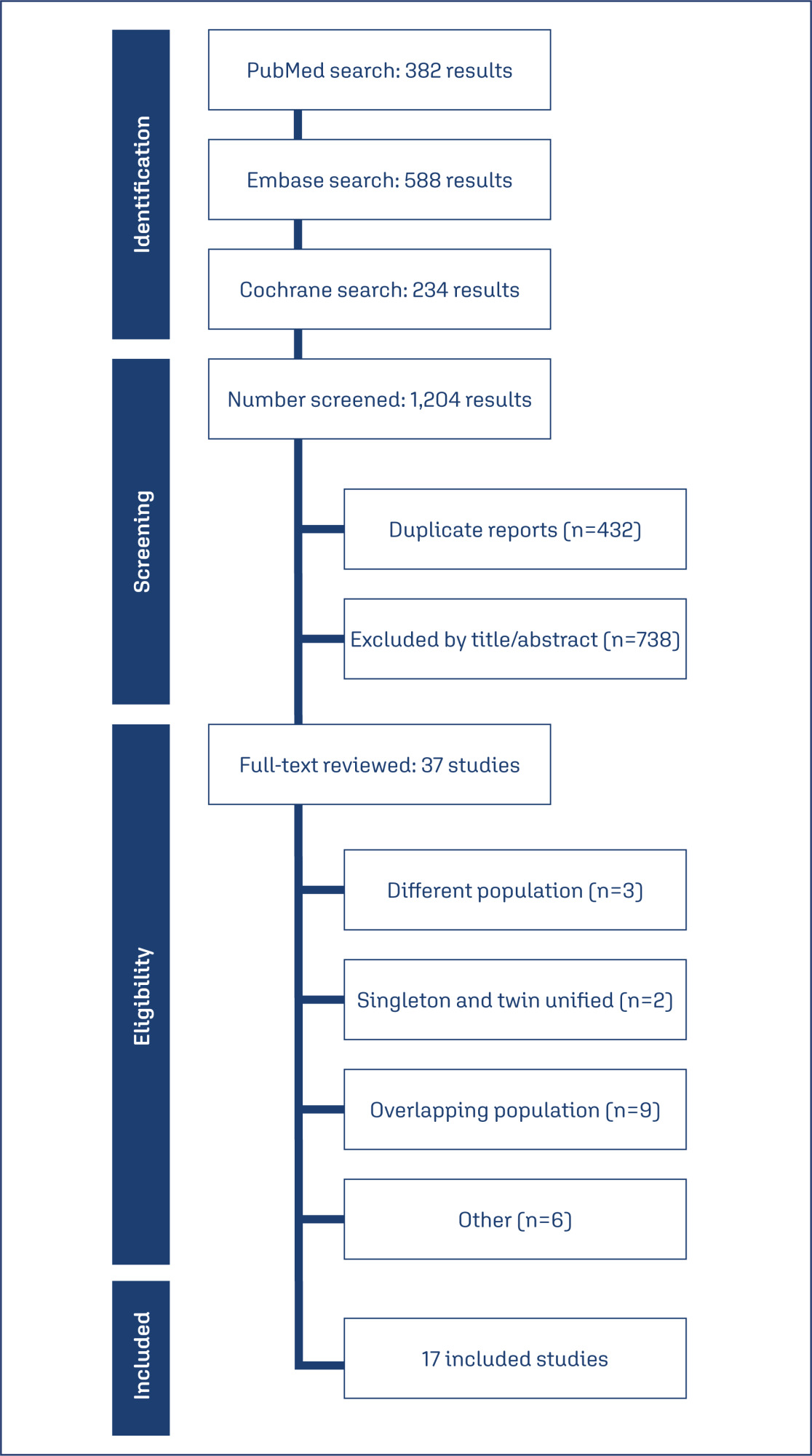
-
Short Communication03-18-2025
Contraception in adolescents with mental disorders: adherence and satisfaction in the use of depot medroxyprogesterone acetate
Revista Brasileira de Ginecologia e Obstetrícia. 2025;47:e-rbgo9
Abstract
Short CommunicationContraception in adolescents with mental disorders: adherence and satisfaction in the use of depot medroxyprogesterone acetate
Revista Brasileira de Ginecologia e Obstetrícia. 2025;47:e-rbgo9
Views258See moreAbstract
Objective:
To evaluate the continuation rate, satisfaction, and reasons for discontinuation of depot medroxyprogesterone acetate (DMPA) in adolescents treated in a mental health service.
Methods:
Prospective cohort study conducted in a reference unit for the care of adolescents with mental disorders (MDs) and intellectual disabilities (IDs). All patients received a gynecological consultation and an educational group on contraceptive methods. Sociodemographic data on age, education and gynecological data (menarche, coitarche, regularity of menstrual cycles and presence of symptoms) were collected. Follow-up was quarterly for 12 months, during which symptoms, desire to continue, and satisfaction with the use of the quarterly injectable were assessed.
Results:
Eight hundred and sixty-two sexually active adolescents were supported, 532 adolescents chose to use the quarterly injectable, and 69 of these agreed to participate in the study. The mean age of users was 15.5 years (SD=0.91). After 12 months of follow-up, 34 (49.3%) of the 69 adolescents continued to use the method and 36 (52.3%) were satisfied. Among the 33 (47.8%) who discontinued use, the most common reasons were irregular bleeding and weight gain.
Conclusions:
Adolescents with intellectual disabilities and/or other mental disorders showed a significant rate of continuation and satisfaction with the use of the depot medroxyprogesterone acetate at 12 months, and the most common reasons for discontinuation were irregular uterine bleeding and weight gain.
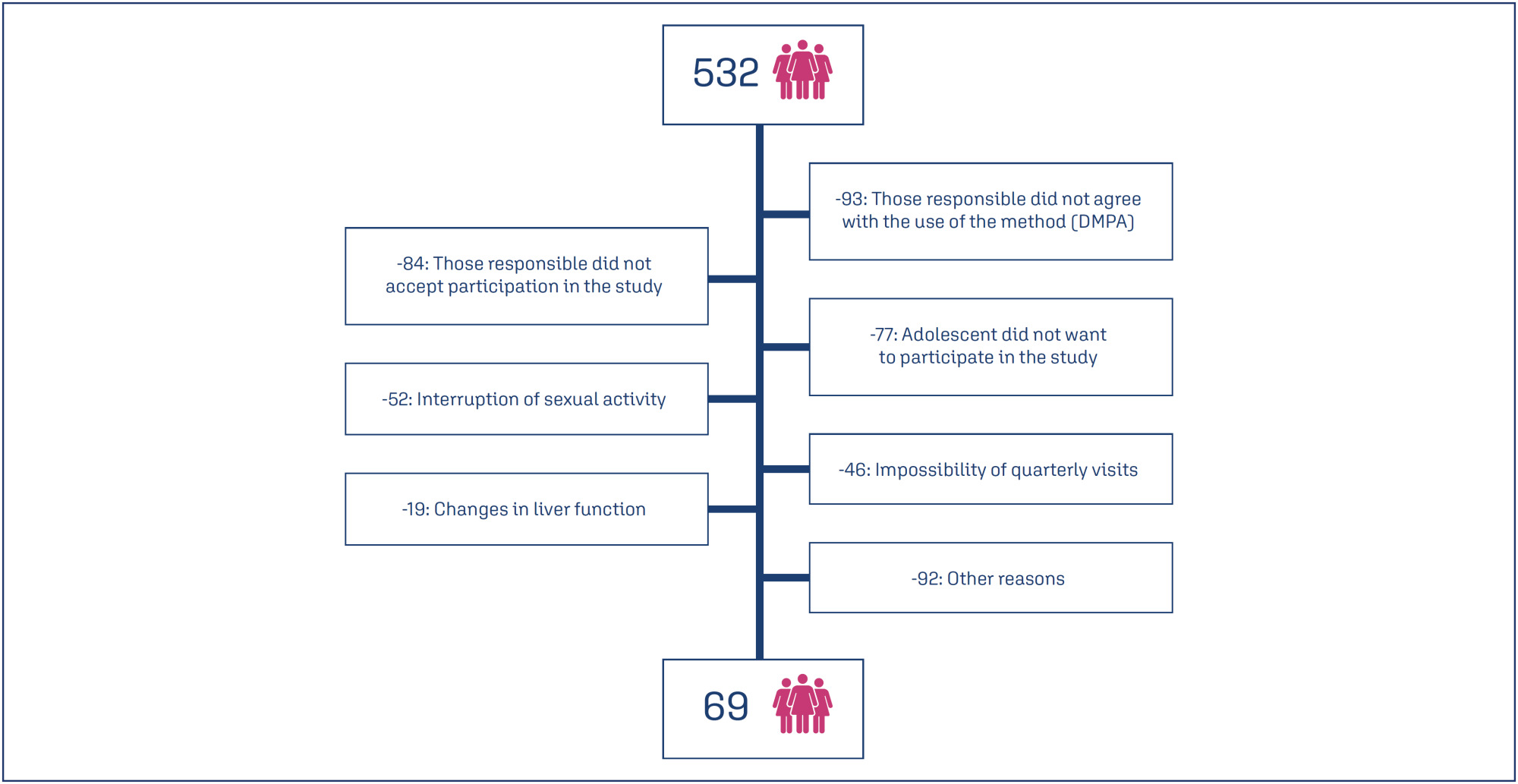
-
Original Article03-18-2025
The experience of pregnancy in the COVID-19 pandemic
Revista Brasileira de Ginecologia e Obstetrícia. 2025;47:e-rbgo8
Abstract
Original ArticleThe experience of pregnancy in the COVID-19 pandemic
Revista Brasileira de Ginecologia e Obstetrícia. 2025;47:e-rbgo8
Views323See moreAbstract
Objective:
To describe women’s experience of pregnancy during the COVID-19 pandemic.
Methods:
A qualitative study conducted in a private maternity hospital, from May, 2020 to November, 2021, with women aged ≥ 18 years, gestational age ≥ 36 weeks at birth and ≥ 24 hours post-partum. Data collected through semi-structured interviews, recorded, transcribed, and analyzed adopting Krippendorff’s Content Analysis as theoretical-methodological framework.
Results:
Four main themes emerged: Fear, Taking care and celebrating pregnancy: adjusting to the new reality, Harms of Isolation, and Benefits of Isolation. The fear of contamination and its impact on the health of mother and child resulted in the adoption of severe social isolation, including from those considered sources of support by the expecting mother. Overwhelmed, some of the participants reported loneliness and psychic suffering. The opportunity to focus on the pregnancy, the preparations for the arrival of the child, and the family made isolation a beneficial and positive period for other women.
Conclusion:
The experience of pregnancy in the Pandemic was an event outside of the ordinary and common. The expecting mother faced her worst fears on a daily basis and attended prenatal care, in order to ensure her child would be born healthy. The celebration of the baby’s life, amid so many deaths, had to be adjusted to the virtual environment. It was a tense, solitary, and ambiguous period, which demanded a lot from the mental health of some participants, but to others, brought advantages that would not have been possible in different times.
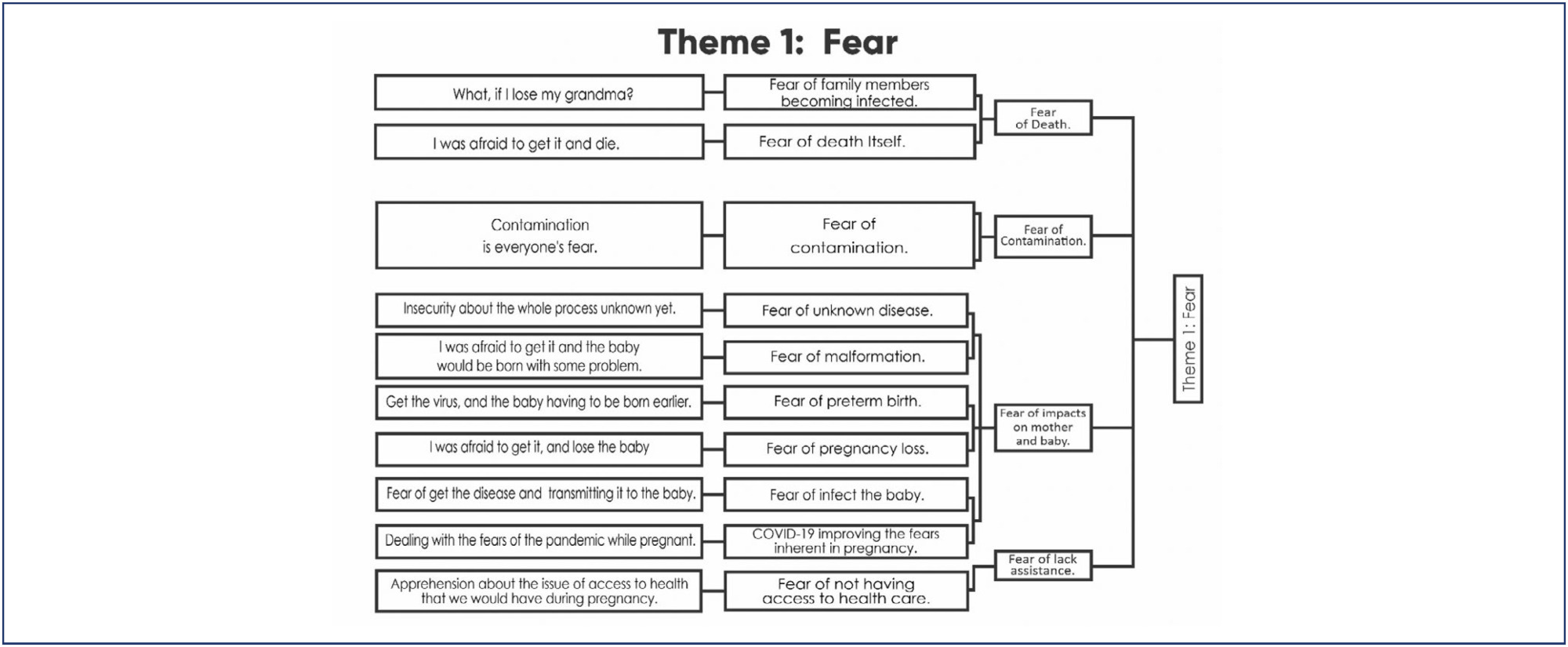
-
Case Report04-01-2016
Prenatal Diagnosis of Lissencephaly Type 2 using Three-dimensional Ultrasound and Fetal MRI: Case Report and Review of the Literature
Revista Brasileira de Ginecologia e Obstetrícia. 2016;38(4):201-206
Abstract
Case ReportPrenatal Diagnosis of Lissencephaly Type 2 using Three-dimensional Ultrasound and Fetal MRI: Case Report and Review of the Literature
Revista Brasileira de Ginecologia e Obstetrícia. 2016;38(4):201-206
Views209Abstract
Lissencephaly is a genetic heterogeneous autosomal recessive disorder characterized by the classical triad: brain malformations, eye anomalies, and congenital muscular dystrophy. Prenatal diagnosis is feasible by demonstrating abnormal development of sulci and gyri. Magnetic resonance imaging (MRI) may enhance detection of developmental cortical disorders as well as ocular anomalies. We describe a case of early diagnosis of lissencephaly type 2 detected at the time of routine second trimester scan by three-dimensional ultrasound and fetal MRI. Gross pathology confirmed the accuracy of the prenatal diagnosis while histology showed the typical feature of cobblestone cortex. As the disease is associated with poor perinatal prognosis, early and accurate prenatal diagnosis is important for genetic counseling and antenatal care.
Key-words cobblestone cortexGenetic counselinglissencephalyMagnetic resonance ImagingPathologyprenatal diagnosisthree-dimensional ultrasoundSee more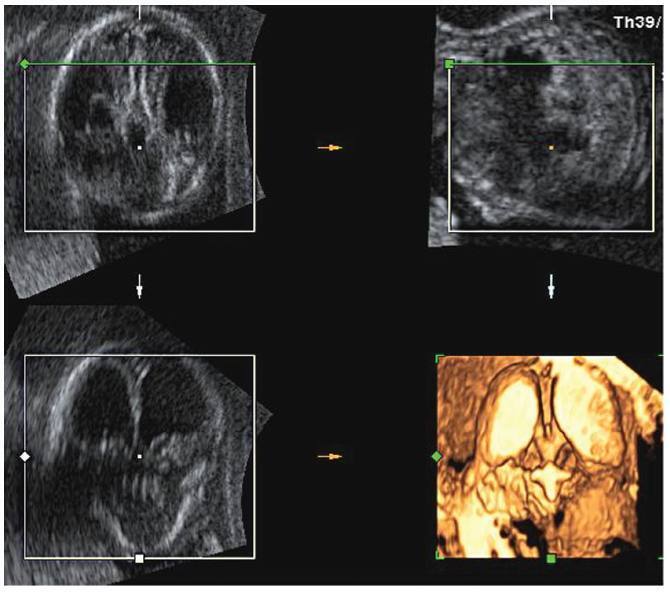
-
Short Communication12-01-2017
Nutritional Counseling Promotes Changes in the Dietary Habits of Overweight and Obese Adolescents with Polycystic Ovary Syndrome
Revista Brasileira de Ginecologia e Obstetrícia. 2017;39(12):692-696
Abstract
Short CommunicationNutritional Counseling Promotes Changes in the Dietary Habits of Overweight and Obese Adolescents with Polycystic Ovary Syndrome
Revista Brasileira de Ginecologia e Obstetrícia. 2017;39(12):692-696
Views208See moreAbstract
Objective
To evaluate the effects of nutritional counseling on the dietary habits and anthropometric parameters of overweight and obese adolescentswith polycystic ovary syndrome (PCOS).
Methods
This was a prospective, longitudinal and auto-controlled study. Thirty adolescents aged 13-19 years-old, diagnosed with PCOS received nutritional counseling and were followed-up for 6 months. After the follow-up period, the results were evaluated through body weight, body mass index (BMI) and waist circumference (WC).
Results
Sixty-percent of the adolescents adhered to the nutritional counseling and, of these, 50% lost weight. Adolescents who lost weight changed their dietary habits by adopting hypocaloric diets and eating more meals per day, as per nutritional counseling. The waist circumference (WC) decreased significantly, although the body weight decreased non-significantly after adoption of a hypocaloric diet.
Conclusion
Although there was no significant weight loss, there was a considerable reduction in theWCassociated with hypocaloric diets and with eating a greater number of meals per day.
-
Original Article04-15-2019
The Influence of Light Exposure in Ambiance during Pregnancy inMaternal and Fetal Outcomes: An Experimental Study
Revista Brasileira de Ginecologia e Obstetrícia. 2019;41(1):24-30
Abstract
Original ArticleThe Influence of Light Exposure in Ambiance during Pregnancy inMaternal and Fetal Outcomes: An Experimental Study
Revista Brasileira de Ginecologia e Obstetrícia. 2019;41(1):24-30
Views208See moreAbstract
Objective
The aim of this study is to evaluate whether exposure to different environmental lighting conditions affects the reproductive parameters of pregnant mice and the development of their offspring.
Methods
Fifteen pregnant albino mice were divided into three groups: light/dark, light, and dark. The animalswere euthanized on day 18 of pregnancy following the Brazilian Good Practice Guide for Euthanasia of Animals.Maternal and fetal specimens weremeasured and collected for histological evaluation. Analysis of variance (ANOVA) test was used for comparison of the groups considering p ≤ 0.05 to be statistically significant.
Results
There was no significant difference in the maternal variables between the three groups. Regarding fetal variables, significant differences were observed in the anthropometric measures between the groups exposed to different environmental lighting conditions, with the highest mean values in the light group. The histological evaluation showed the same structural pattern of the placenta in all groups, which was within the normal range. However, evaluation of the uterus revealed a discrete to moderate number of endometrial glands in the light/dark and light groups, which were poorly developed in most animals. In the fetuses, pulmonary analysis revealed morphological features consistent with the transition from the canalicular to the saccular phase in all groups.
Conclusion
Exposure to different environmental lighting conditions had no influence on the reproductive parameters of female mice, while the offspring of mothers exposed to light for 24 hours exhibited better morphometric features.
-
FEBRASGO POSITION STATEMENT12-17-2021
Fertility preservation in women with endometriosis Number 10 – October 2021
Revista Brasileira de Ginecologia e Obstetrícia. 2021;43(10):796-801
Abstract
FEBRASGO POSITION STATEMENTFertility preservation in women with endometriosis Number 10 – October 2021
Revista Brasileira de Ginecologia e Obstetrícia. 2021;43(10):796-801
-
Original Article01-24-2021
Overview of the Effect of Complementary Medicine on Treating or Mitigating the Risk of Endometriosis
Revista Brasileira de Ginecologia e Obstetrícia. 2021;43(12):919-925
Abstract
Original ArticleOverview of the Effect of Complementary Medicine on Treating or Mitigating the Risk of Endometriosis
Revista Brasileira de Ginecologia e Obstetrícia. 2021;43(12):919-925
Views194See moreAbstract
Objective
Endometriosis is a hormone-dependent chronic inflammatory disease with symptoms such as pelvic pain, which affect the physical, emotional, and social health of women in reproductive age. The current overview article aims to explore the effect of complementary medicine on the treatment or in mitigating the risk of endometriosis.
Methods
This is an overview article done in Iran. Two separate researchers systematically searched 3 databases (Medline, Scopus, and Cochrane Central Register Trials) until September 2020. The methodological quality of each study was assessed using the assessment of multiple systematic reviews (AMSTAR) tool.
Results
The results of two reviews suggested that physical activity, tobacco smoking, diet, coffee and caffeine intake had no effect on mitigating the risk of endometriosis or improving its treatment, but acupuncture successfully reduced pain and related marker (serum CA-125) levels.
Conclusion
As endometriosis is an annoying disease with many complications and is hard to diagnose and treat, related studies in complementary medicine can help patients with endometriosis. Based on the relevant literature review, among the complementary medicine available for the treatment or to mitigate the risk of endometriosis, only acupuncture seems to alleviate the pain of endometriosis.
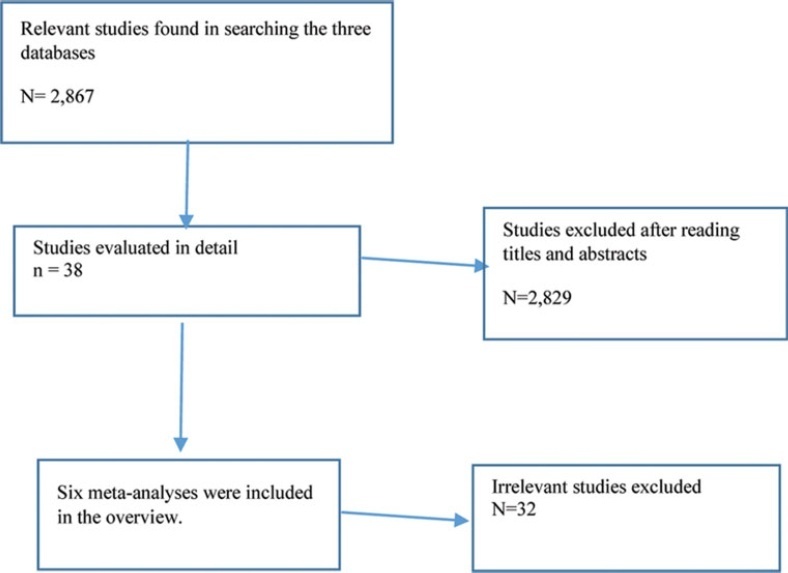
-
Original Article07-07-2022
Increment of Maternal Mortality Among Admissions for Childbirth in Low-risk Pregnant Women in Brazil: Effect of COVID-19 Pandemic?
Revista Brasileira de Ginecologia e Obstetrícia. 2022;44(8):740-745
Abstract
Original ArticleIncrement of Maternal Mortality Among Admissions for Childbirth in Low-risk Pregnant Women in Brazil: Effect of COVID-19 Pandemic?
Revista Brasileira de Ginecologia e Obstetrícia. 2022;44(8):740-745
Views205See moreAbstract
Objective
To assess the possible impact of the COVID-19 pandemic on maternal mortality among admissions for childbirth in 2020 in relation of the last 10 years.
Methods
An ecological study with pregnant women who underwent hospital births at the Brazilian unified public health service (SUS, in the Portuguese acronym) in Brazil from 2010 to 2020. The mortality among admissions for childbirth was obtained based on the number of admissions for childbirth with reported death as outcome divided by the total number of admissions. The underlying gestational risk and route of delivery were considered based on the national surveillance system. The average mortality for the period between 2010 and 2019 (baseline) was compared with the rate of deaths in 2020 (1st pandemic year); the rate ratio was interpreted as the risk of death in 2020 in relation to the average of the previous period (RR), with 95% confidence intervals (CIs).
Results
In 2020, the 1st year of the COVID-19 pandemic, 1,821,775 pregnant women were hospitalized for childbirth and 651 deaths were reported, which represents 8.7% of the total hospitalizations and 11.3% of maternal deaths between 2010 and 2020. There was an increase in maternal mortality after births in 2020 compared with the average for the period between 2010 and 2019, specially in low-risk pregnancies, both in vaginal (RR = 1.60; 95%CI:1.39–1.85) and cesarean births (RR = 1.18; 95%CI:1.04–1.34).
Conclusion
Maternal mortality among admissions for childbirth according to SUS data increased in 2020 compared with the average between 2010 and 2019, with an increment of 40% in low-risk pregnancies. The increase was of 18% after cesarean section and of 60% after vaginal delivery.
-
Original Article02-17-2022
Quality of Life of Pregnant Women with Systemic Lupus Erythematosus
Revista Brasileira de Ginecologia e Obstetrícia. 2022;44(5):475-482
Abstract
Original ArticleQuality of Life of Pregnant Women with Systemic Lupus Erythematosus
Revista Brasileira de Ginecologia e Obstetrícia. 2022;44(5):475-482
Views205See moreAbstract
Objective
To assess the quality of life (QoL) of pregnant women with systemic lupus erythematosus (SLE) treated at a high-risk prenatal outpatient clinic during the third trimester of gestation.
Methods
An observational descriptive study was performed in a high-risk prenatal outpatient clinic. Women in the third trimester of pregnancy and undergoing antenatal care between July 2017 and July 2019 answered the abbreviated World Health Organization Quality of Life (WHOQOL-BREF) questionnaire, consisting of 26 questions divided into 4 domains (physical, psychological, social and environmental).
Results
We interviewed 50 pregnant women with a mean gestational age of 30 weeks (standard deviation [SD]: 10 weeks) who were diagnosed with SLE. The average age of the participants was 30 years (SD: 14.85), and the average time since the diagnosis of SLE was of 9.06 years (SD: 6.8 years). Most participants had a partner, did not plan their pregnancy (76%), and did not use contraception prior to pregnancy (80%). The score of each domain ranges from 0 (the worst score) to 100 (the best score). The means ± SDs of the scores of the participants on each domain were: physical – 52.21 ± 18.44); psychological – 64.17 ± 18.56); social – 66.33 ± 27.09); and environmental – 64.56 (18.53). The means ± SDs of the general QoL, and health-related QoL items were of 70.50 ± 24.06 and 70.00 ± 30.72 respectively.
Conclusion
The physical domain presented the lowest scores compared with the other three domains. Pregnant women with SLE had high overall QoL scores, and their health-related QoL scores were also relatively high.
-
Systematic Review12-01-2017
Is Pethidine Safe during Labor? Systematic Review
Revista Brasileira de Ginecologia e Obstetrícia. 2017;39(12):686-691
Abstract
Systematic ReviewIs Pethidine Safe during Labor? Systematic Review
Revista Brasileira de Ginecologia e Obstetrícia. 2017;39(12):686-691
Views174See moreAbstract
Purpose
To verify if pethidine is safe for the conceptus when used during labor.
Methods
Systematic review in the Capes Periodicals/PubMed and MEDLINE/Virtual Health Library (BVS, in the Portuguese acronym) databases.
Results
A total of 17 studies published from January 1st, 2000, to September 2nd, 2016, with a total of 1,688 participants involved were included in the present review. There was no record of conceptus vitality decrease associated with low doses of pethidine being administered to mothers during labor.
Conclusions
Intramuscular (IM) or intravenous (IV) pethidine at low doses, of up to 50 mg, is safe to administer during labor.
Search
Search in:
Tag Cloud
Pregnancy (252)Breast neoplasms (104)Pregnancy complications (104)Risk factors (103)Menopause (88)Ultrasonography (83)Cesarean section (78)Prenatal care (71)Endometriosis (70)Obesity (61)Infertility (57)Quality of life (55)prenatal diagnosis (51)Women's health (48)Maternal mortality (46)Postpartum period (46)Pregnant women (45)Breast (44)Prevalence (43)Uterine cervical neoplasms (43)


